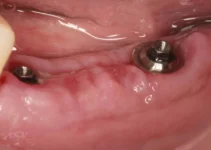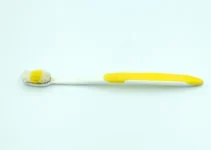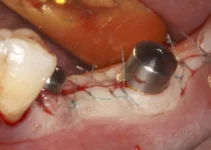Baby sleep apnea is a condition that can cause significant concern for parents. It involves brief interruptions of breathing during a baby’s sleep. Unlike adults, infants with this condition might not snore, making it less noticeable initially. Symptoms can include frequent pauses in breathing, gasping or choking, and restlessness during sleep. Addressing baby sleep apnea promptly is crucial, as it can impact a child’s growth, development, and overall health. Treatments may range from simple environmental changes to using medical devices, depending on the severity of the condition. Consulting with a pediatrician is the first step towards a diagnosis and tailored treatment plan.
Causes of Baby Sleep Apnea
Baby sleep apnea is a condition where an infant’s breathing is disrupted during sleep. Understanding the causes of this condition can help in early detection and treatment. There are several potential factors that can contribute to sleep apnea in babies, including genetic factors, environmental influences, and underlying medical conditions.
Let’s delve deeper into each of these factors to get a comprehensive understanding of why baby sleep apnea occurs and how it can be managed effectively.
Genetic Factors
Genetic factors can play a significant role in the development of baby sleep apnea. Some infants may inherit traits from their parents that predispose them to this condition. For instance, a family history of sleep apnea or other respiratory issues can increase the likelihood of an infant developing sleep apnea.
Researchers have identified specific genetic markers associated with sleep apnea, suggesting that certain genetic profiles may increase susceptibility. These genetic predispositions may affect the structure of the airway or the brain’s ability to regulate breathing during sleep.
Environmental Factors
The environment in which a baby sleeps can also influence the development of sleep apnea. Factors such as exposure to secondhand smoke can irritate the infant’s airways, leading to breathing difficulties. Ensuring a smoke-free environment is crucial for minimizing the risk.
Moreover, the sleeping position of the baby can affect air passage. For example, babies who sleep on their backs are generally at a lower risk of developing sleep apnea compared to those who sleep on their stomachs. It’s important for caregivers to follow safe sleep guidelines to reduce environmental risks.
Additionally, allergens such as dust mites or pet dander in the bedroom can contribute to airway inflammation and obstruct breathing. Keeping the baby’s sleeping environment clean and free of allergens is vital.
Medical Conditions
Several underlying medical conditions can also contribute to the occurrence of sleep apnea in infants. Premature babies are at a higher risk due to the underdevelopment of their respiratory systems. Their airways may be more prone to collapse during sleep. Neuromuscular disorders that affect the muscles involved in breathing can also lead to sleep apnea. In such cases, the infant may have difficulty maintaining a clear airway during sleep, leading to episodes of apnea.
Conditions like Down syndrome or congenital abnormalities in the airway structure can further exacerbate the risk. It’s essential to monitor and manage these medical conditions to prevent the onset of sleep apnea.
Understanding these causes is the first step toward effective treatment and management. By addressing the genetic, environmental, and medical factors, healthcare providers can develop a comprehensive approach to help infants sleep safely and soundly.
For more insightful articles on infant health and sleep disorders, continue exploring our website. We offer a wealth of information to help you navigate the complexities of baby sleep apnea and other related conditions.
Recognizing Symptoms of Baby Sleep Apnea
Sleep apnea is not just an adult condition; it can also affect infants. Recognizing the symptoms early is crucial for obtaining appropriate treatment and ensuring your baby gets the restful sleep they need for healthy development. In this section, we will discuss the most common symptoms of baby sleep apnea, helping you identify signs that may warrant further medical attention.
Infant sleep apnea can manifest in various ways, often different from those seen in adults. Parents and caregivers should be vigilant about changes in sleeping patterns and behaviors. Understanding these symptoms can lead to earlier intervention, which is crucial for effective treatment.
To make it easier for parents to identify potential issues, we will break down the most common symptoms into three categories: breathing pauses, snoring and gasping, and restless sleep.
Breathing Pauses
One of the hallmark symptoms of sleep apnea in infants is breathing pauses during sleep. These pauses, medically termed as apneas, can last from a few seconds to even longer. Parents might notice that their baby stops breathing for short periods while sleeping, which can be distressing. Breathing pauses occur when the muscles at the back of the throat fail to keep the airway open. This obstruction causes the baby to momentarily stop breathing. These episodes can occur multiple times throughout the night, disrupting the infant’s sleep cycle.
It is essential to monitor your baby if you suspect they are experiencing breathing pauses. Document the frequency and duration of these pauses and discuss them with your pediatrician. Early detection and intervention can significantly improve the quality of life for your baby.
Snoring and Gasping
Snoring and gasping noises during sleep are another indication that your baby might be suffering from sleep apnea. While occasional snoring can be normal, persistent snoring accompanied by gasping or choking sounds warrants further investigation.
These sounds indicate that the baby’s airway is partially blocked. The obstruction causes difficulty in breathing, leading the child to gasp for air. This pattern of interrupted breathing can result in poor sleep quality and can also be harmful in the long run.
If you notice these symptoms, it is advisable to consult your pediatrician. They may recommend a sleep study or other diagnostic tests to determine the severity of the condition and appropriate treatment options.
Restless Sleep
Restless sleep is another common symptom of sleep apnea in infants. Babies experiencing sleep apnea may exhibit restless or disrupted sleep patterns. This can include frequent waking, tossing and turning, or unusual sleeping positions.
The constant disturbances caused by breathing interruptions prevent the baby from achieving deep, restorative sleep. Over time, this can negatively impact their overall growth and development.
Signs of restless sleep can be subtle but significant. Pay close attention to how often your baby wakes up during the night and whether they seem unusually fussy upon waking. These could be indicators of underlying sleep apnea.
If your baby is showing signs of restless sleep, it is important to seek medical advice. Early intervention with treatments like the BTI APNiA® system can help manage sleep apnea symptoms effectively, ensuring better sleep quality for your infant.
Understanding these symptoms can help you take the first step toward getting the right diagnosis and treatment for your child’s sleep apnea. For more information on sleep apnea and other related topics, explore our other articles.
Treatment Options for Baby Sleep Apnea
Infant sleep apnea is a serious condition that requires prompt and appropriate treatment to ensure the overall health and well-being of the baby. Various treatment options range from medical interventions to lifestyle changes and home remedies. Understanding these options can help parents and caregivers make informed decisions about managing sleep apnea in infants.
In addressing sleep apnea, it is crucial to consider the severity of the condition. Pediatricians and specialists will evaluate the baby’s symptoms and recommend a tailored treatment plan. Here, we explore the primary treatment options available for infant sleep apnea.
Medical Interventions
Medical interventions are often necessary when sleep apnea in infants is moderate to severe. One of the most common interventions is the use of Continuous Positive Airway Pressure (CPAP). This treatment involves using a machine that delivers consistent air pressure to keep the baby’s airways open during sleep.
Another potential medical intervention is oxygen therapy. This approach is typically used when sleep apnea is causing significant dips in the baby’s oxygen levels. Oxygen therapy ensures that the infant receives adequate oxygen while sleeping, which can reduce symptoms and prevent complications.
In some cases, surgery might be recommended, especially when anatomical abnormalities contribute to sleep apnea. Examples of surgical options include removal of the tonsils or adenoids (adenotonsillectomy) or correcting structural issues in the nasal passages or throat.
It’s essential to work closely with a healthcare provider to determine the most appropriate medical intervention based on the specific needs and condition of the baby.
Lifestyle Changes
In addition to medical interventions, certain lifestyle changes can significantly impact the management of sleep apnea in infants. One of the primary lifestyle modifications is positioning. Keeping the baby in a different sleep position, such as elevating the head of the bed or ensuring the baby sleeps on their back, can help reduce the occurrence of apnea episodes.
Maintaining a healthy weight is also crucial, as excessive weight can exacerbate sleep apnea. For infants, this involves ensuring proper nutrition and regular check-ups to monitor growth patterns.
Creating a safe and comfortable sleep environment is also essential. This includes using a firm mattress, avoiding overly soft bedding, and keeping the sleep area free from potential allergens that could affect breathing.
Implementing these lifestyle changes can complement medical treatments and contribute to a significant improvement in the baby’s sleep quality and overall health.
Home Remedies
While medical interventions and lifestyle changes are fundamental, some home remedies can also help manage sleep apnea in infants. Ensuring that the baby’s nasal passages are clear is critical. Parents can use a saline nasal spray or a nasal aspirator to relieve nasal congestion, which can improve breathing during sleep.
Humidifiers can also be beneficial in keeping the air moist, particularly in dry climates or during winter months. Moist air can help keep the baby’s airways open and reduce the likelihood of apnea episodes.
Consistency in the baby’s sleep schedule is another key factor. Establishing a regular bedtime routine helps the infant develop good sleep habits, which can reduce the frequency of apnea episodes. A calm and soothing pre-sleep routine might include activities like a warm bath, gentle rocking, or reading a bedtime story.
In conclusion, addressing infant sleep apnea involves a combination of medical interventions, lifestyle changes, and home remedies. By understanding these treatment options, parents and caregivers can take proactive steps to manage the condition effectively. For further reading on related health topics, consider exploring our other articles on pediatric care and wellness.
FAQs on Baby Sleep Apnea
Here are some frequently asked questions about sleep apnea in babies, including signs and potential treatments.
What are the common symptoms of sleep apnea in babies?
Baby sleep apnea is often characterized by repeated pauses in breathing that can last more than 20 seconds. Symptoms may include noticeable episodes of no breathing, abnormal breathing patterns, choking or snorting sounds, restlessness during sleep, and in some cases, cyanosis (bluish color) around the lips.
How is sleep apnea in babies treated?
Treatment for baby sleep apnea can vary based on the severity and underlying causes. Common approaches include monitoring the baby’s breathing and heart rate in a medical setting, using oxygen support if needed, and sometimes a continuous positive airway pressure (CPAP) machine to keep the airway open. Addressing issues like gastroesophageal reflux, improving sleep posture, or surgery to remove obstructive tissue may also be considered based on individual cases.

My name is Salman Kapa, a 73-year-old expert in bone regeneration and dental implantology. With decades of experience in the field, I am dedicated to advancing our understanding of oral health and hygiene. Through my research and writing, I aim to contribute to the development of innovative solutions in dental care.




